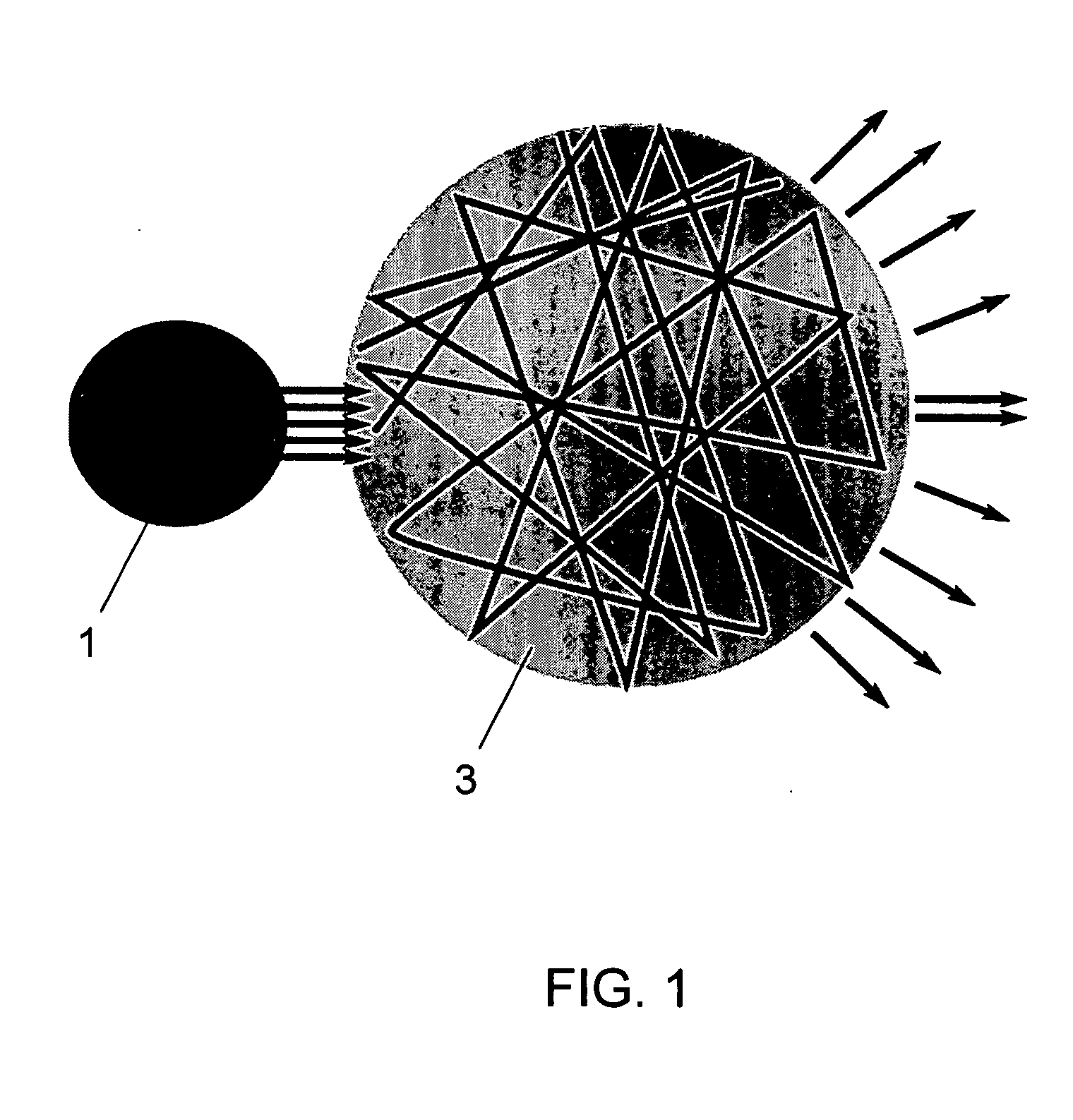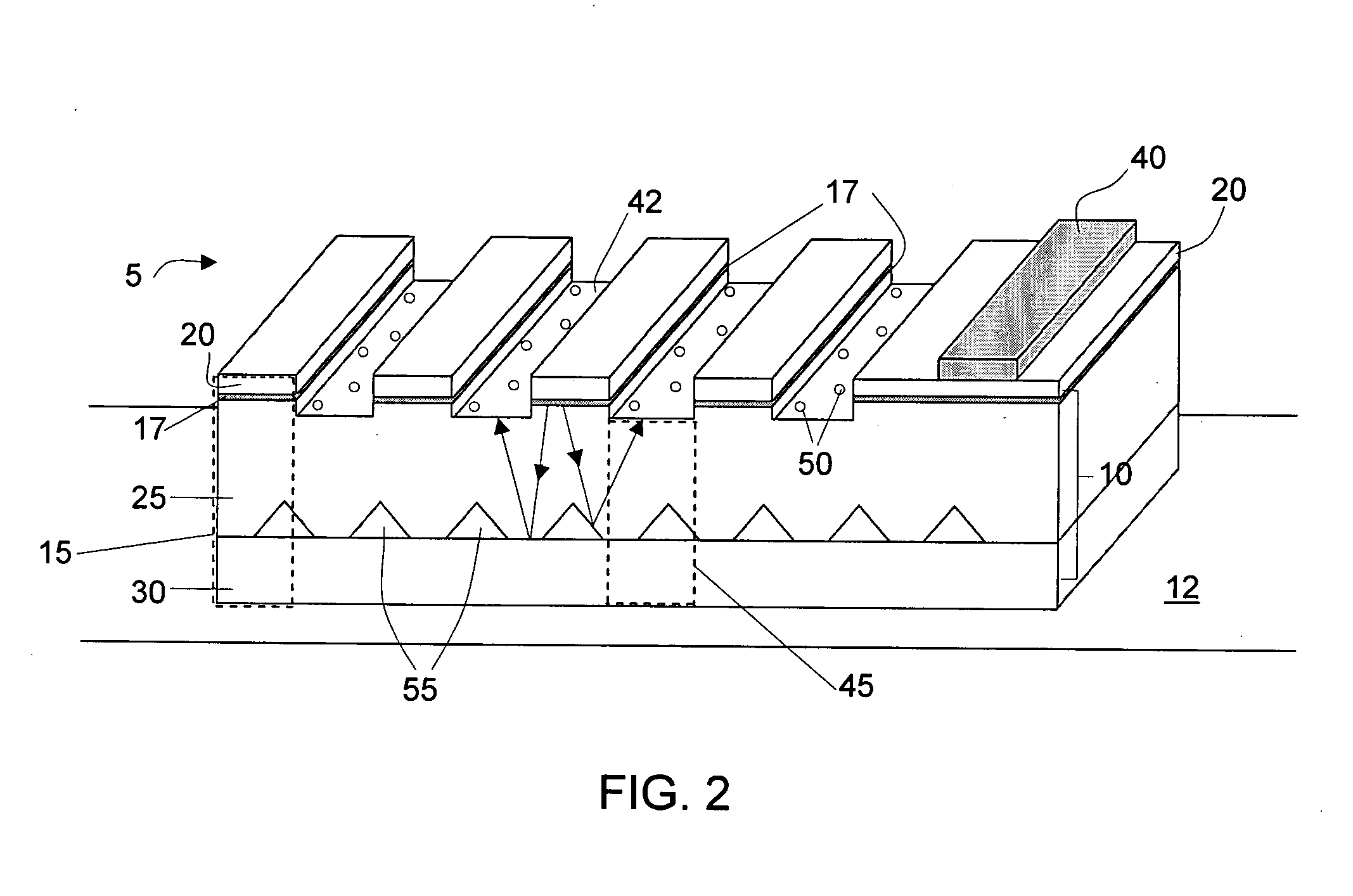Spatial localization of light-generating portions in LEDs
a technology of leds and light-generating parts, applied in the field of light-emitting diodes, can solve the problems of poor light extraction and inefficient light collimation
- Summary
- Abstract
- Description
- Claims
- Application Information
AI Technical Summary
Benefits of technology
Problems solved by technology
Method used
Image
Examples
Embodiment Construction
[0027]Light-emitting devices (e.g., LEDs) and methods associated with such devices are provided. As shown schematically in FIG. 1, an LED may include a light-generating portion 1 (which includes an active region) that is spatially isolated from a light-extraction portion 3. This separation of light-generating portion(s) from light-extraction portion(s) can allow light generated by the device to propagate and pass through regions of low absorption (e.g., light-extraction portions) rather than in regions of high absorption (e.g., light-generating portions). The low absorption regions allow photons to have longer lifetimes and inherently increase the escape probability of the photons, which in turn, can enhance light emission. In some embodiments, the device includes a distribution of light-generating portions that are spatially localized and separated (e.g., horizontally or vertically) from one or more patterned light extraction portions. Accordingly, the device may include a light ex...
PUM
 Login to View More
Login to View More Abstract
Description
Claims
Application Information
 Login to View More
Login to View More - R&D
- Intellectual Property
- Life Sciences
- Materials
- Tech Scout
- Unparalleled Data Quality
- Higher Quality Content
- 60% Fewer Hallucinations
Browse by: Latest US Patents, China's latest patents, Technical Efficacy Thesaurus, Application Domain, Technology Topic, Popular Technical Reports.
© 2025 PatSnap. All rights reserved.Legal|Privacy policy|Modern Slavery Act Transparency Statement|Sitemap|About US| Contact US: help@patsnap.com



